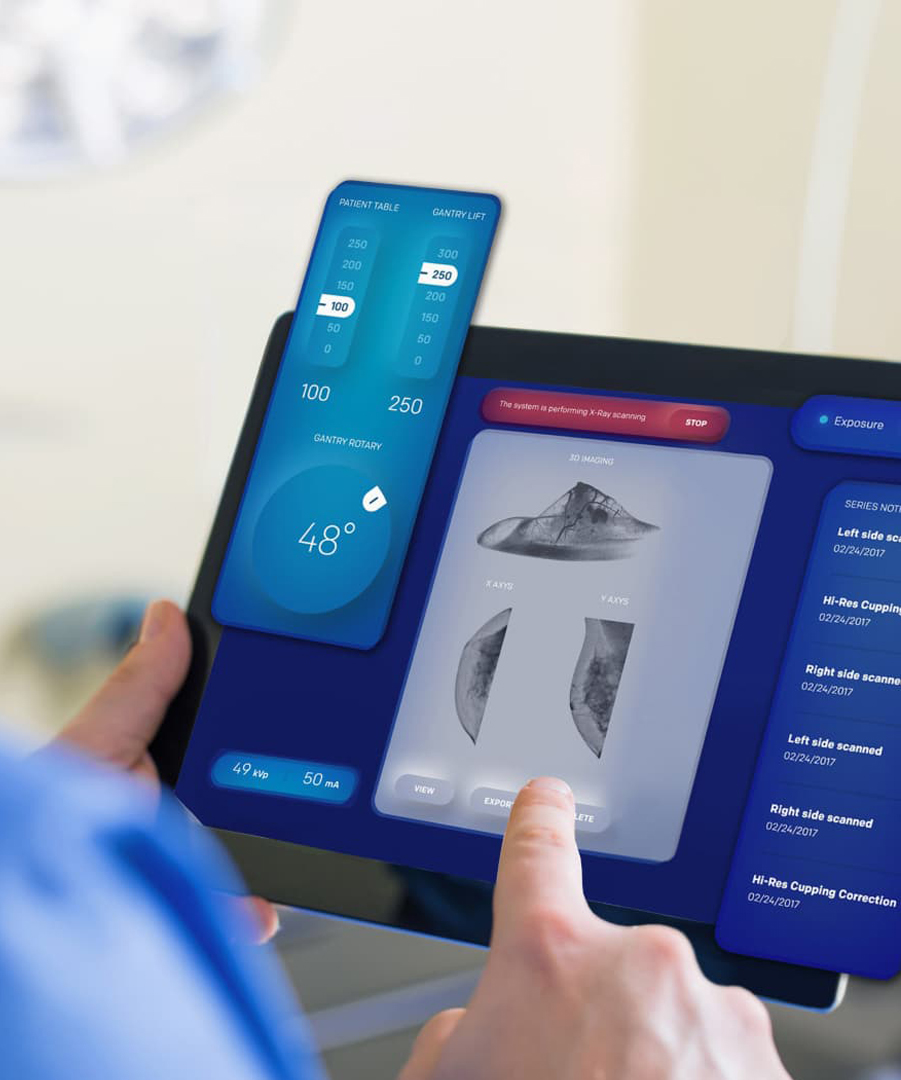


消防署による緊急救助消防車のいすゞ車購入には、需要分析、契約締結、車両生産、車両受入・納入、車両登録・保険手続き、アフターサービス・研修など、複数の段階が関わります。各段階において、消防署とメーカー間の緊密な連携と効果的なコミュニケーションが求められ、購入された消防車が実際のニーズを満たし、その効果を最大限に発揮できるよう確保する必要があります。
トラックモデル:
PT5110GXFSG20作業能力:
50mタンク構造:
2,000L waterホイールベース:
4175mm車軸駆動:
4x2エンジン出力:
190hpエンジンモデル:
Isuzu 4HK1-TC消防ポンプ:
CB10/40消防モニター:
PS30備考:
Huge fire equipment on board消防署で最も人気のある救助消防車は、もちろん緊急消防署の水消防車いすゞです。
水槽付救助消防車いすゞ:
機能:消防ポンプや装備に加え、大型水槽や放水銃、放水砲などを備え、水と消防士を火災現場に輸送し、単独で消火活動を行うことができ、一般的な火災の消火に適しています。
人気:シンプルな構造、簡単な操作性、幅広い適用性から、緊急消防署のいすゞ消防車は、消防署で最も一般的に使用されている消防車の1つです。
泡消火車いすゞ:
機能:化学系消火剤を用いて特殊火災を消火し、特に石油とその製品などの油火災の消火に適しており、引火性および可燃性液体、可燃性ガス火災、通電機器火災、一般物質火災なども消火できます。
人気:いすゞ泡消火車は、特殊な火災リスクに対処する必要がある石油化学企業などで非常に人気があります。
水槽消防車の側梁
特徴:高品質の型鋼を溶接して作られており、2本の縦梁が複数の梁強度保持継手によって高強度ボルト接続されています。側梁は、梁構造を使用して設置され、元の車の梁の均一な応力を確保し、梁の耐用年数を向上させ、部品のねじれによって引き起こされる変形を低減します。
✨ 中国最高の消防署救助消防車工場
✨ 500名以上の従業員、大規模で高度な生産
✨ いすゞクラシックNPRシリーズトラックシャーシ
✨迅速な配送。ご注文は歓迎いたします
✨ 24ヶ月間の品質保証期間
いすゞNPR 2トン水槽消防車
(車両型式: PST5110GXFSG20 / いすゞ水槽消防車)
(シャーシ型式: いすゞNPR)
技術仕様

シャーシパラメータ
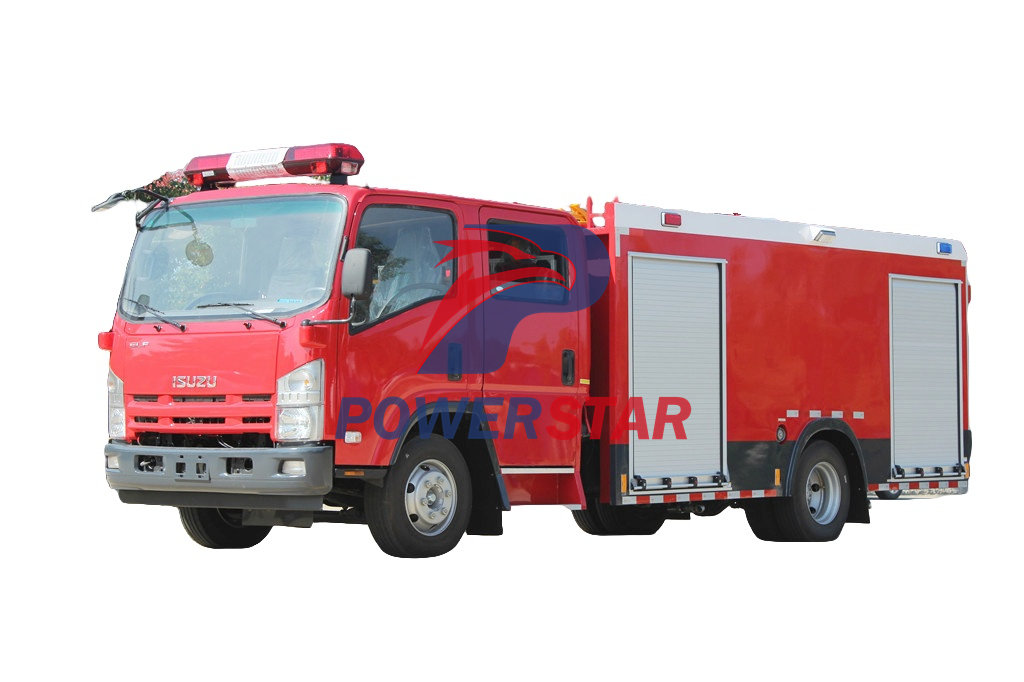
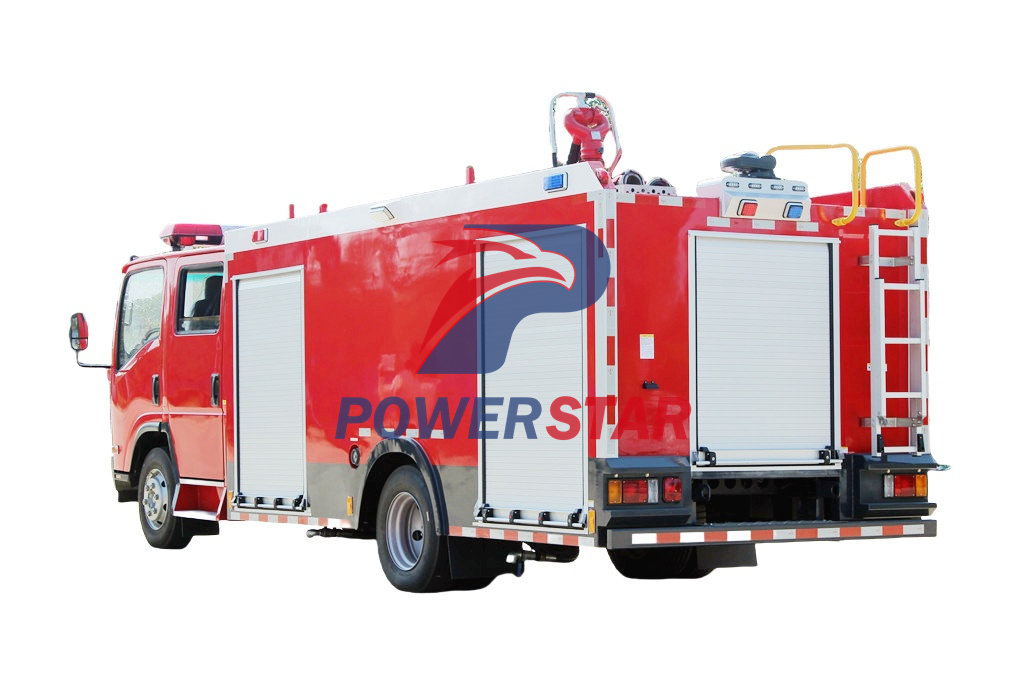
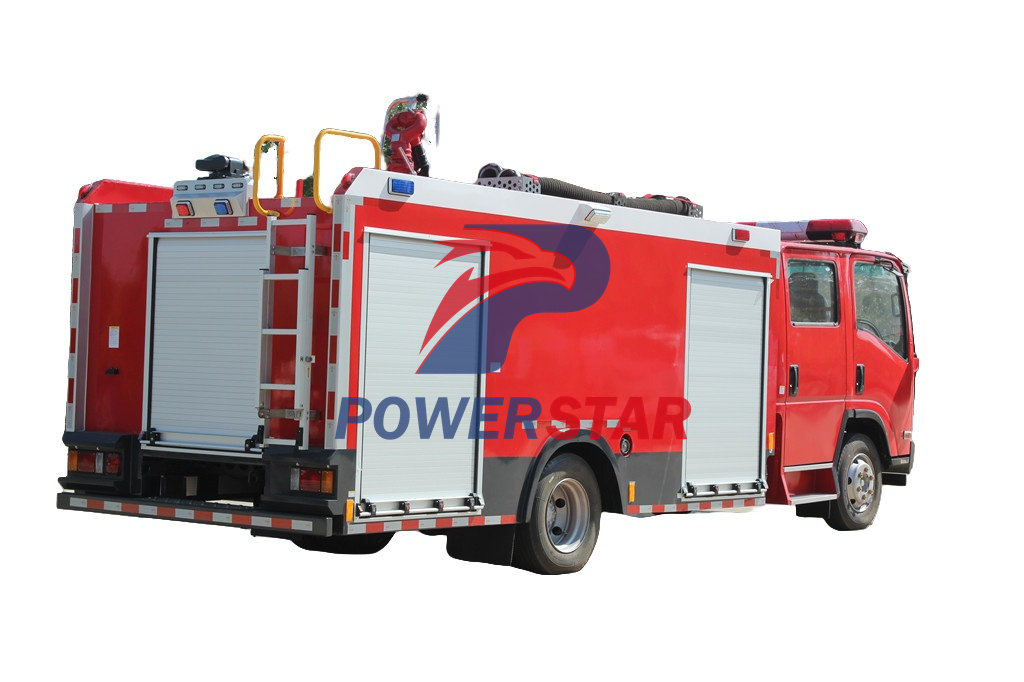
型式:いすゞNPR
エンジン:いすゞ4HK1
出力:140 kW
外形寸法(mm):長さ6860 * 幅2500 * 高さ2750
駆動方式:後輪駆動ホイールベース:4,175 mm
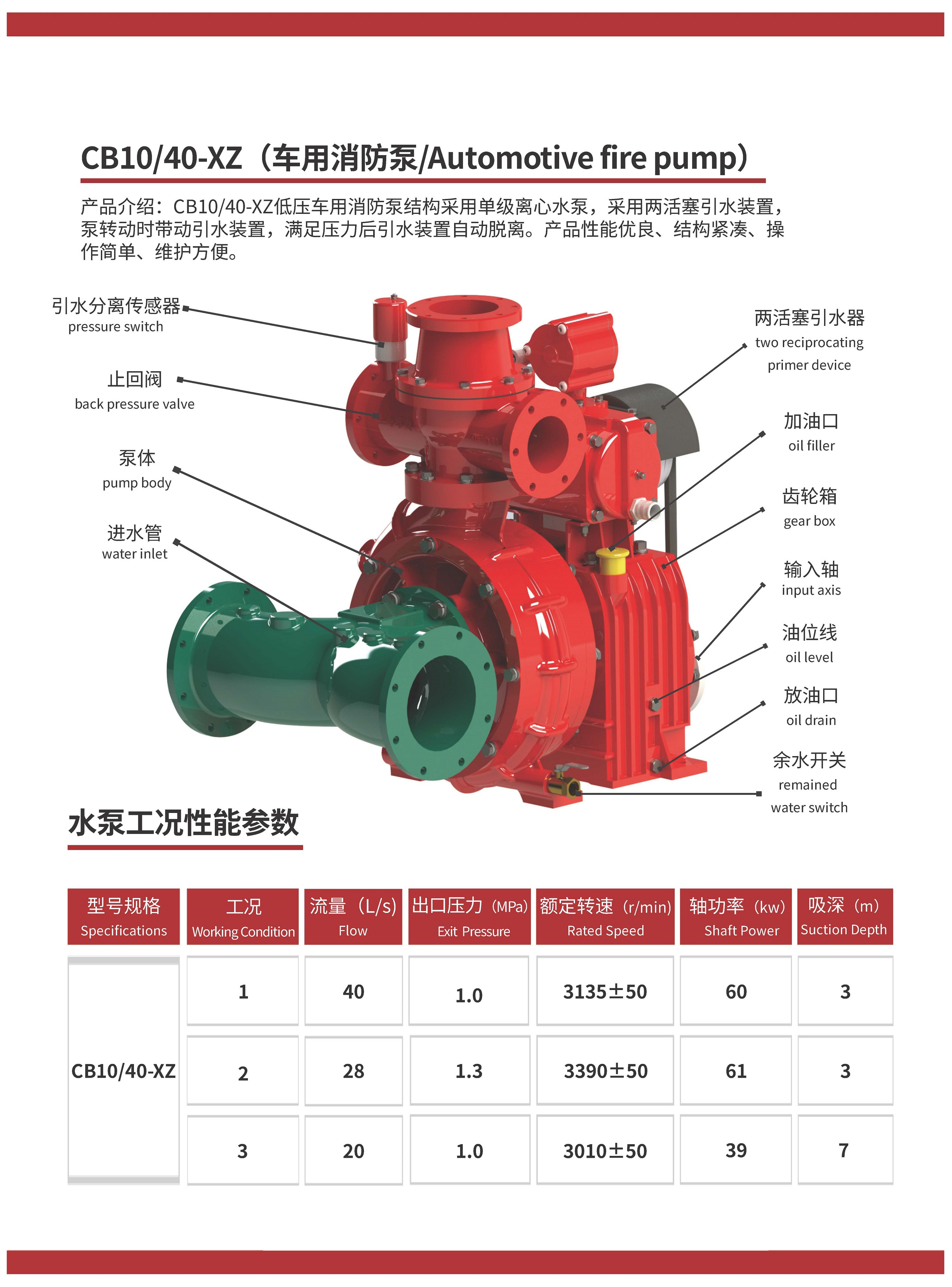
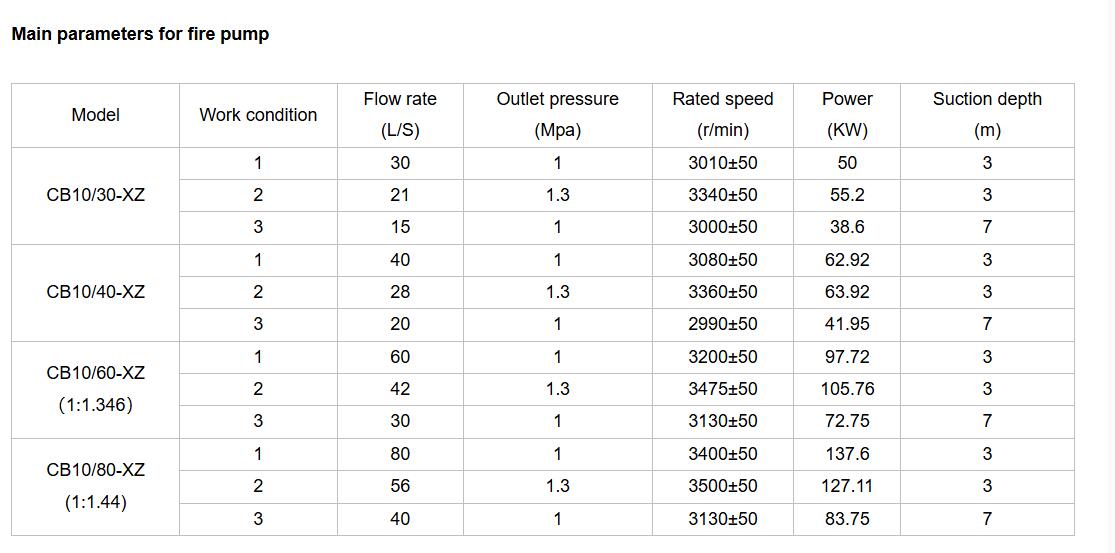 排水管:ウォーターポンプと各ボールバルブを保護するために、排水管が配管に設置され、それぞれボールバルブが装備されています。
排水管:ウォーターポンプと各ボールバルブを保護するために、排水管が配管に設置され、それぞれボールバルブが装備されています。| トレイ | 10 | 13型 Φ65 mm 6個 | 13型 Φ80 mm 4個 | 2 |
| 注水帯 | 本 | 1 | 13型 65mm 内側バックル | 3 DC放水銃 |
| 本 | 1 | 4 | 花形放水銃 | 本 |
| 1 | 5 | 粉末消火器 | 本 | 1 |
| 3kg、ABC粉末 | 6 | 集水器 | 個 | 1 |
| 7 | 分岐水管 | 個 | 1 | 8 |
| 吸水管レンチ | 個 | 2 | 9 | ゴムハンマー |
| 個 | 1 | 10 | 地上消火栓レンチ | 個 |
| 1 | 11 | 地下消火栓レンチ | 個 | 1 |
| 12 | ベルトブリッジ | 個 | 2 | 13 |
| 巻取り布 | 枚 | 4 | 14 | ベルトフック |
| 個 | 4 | 15 | 斧 | 個 |
| 1 | 16 | 吸管 | 本 | 8 |
| 17 | 吸水管フィルター | 個 | 1 | 8m毎に吸管1本 |
| 18 | 異径継手 | 個 | 2 | バッケルΦ65可変Φ80 |
| 消防署が緊急消防車いすゞを購入するプロセスには、通常、以下の重要な手順が含まれます。 | 1.需要分析と機種選定 | 需要分析:消防署はまず、緊急消防車いすゞの目的、性能要件、積載能力、操作性など、自身のニーズを明確にする必要があります。また、予算範囲も考慮します。 | 機種選定:需要分析の結果に基づき、消防署は生産資格を持つ正規の消防車メーカーに連絡し、様々な機種の性能、価格、アフターサービスなどの情報を詳しく調べ、ニーズに最適な機種を選択します。 | 2.契約締結と車両製造 |
| 契約締結:機種を選定した後、消防署はメーカーと法的かつ整合性のある緊急消防車いすゞの購入契約を締結し、車両構成、価格、納期、アフターサービスなどの条件を明確にする必要があります。 | 車両製造:メーカーは契約要件に従って緊急消防車いすゞの製造を開始します。消防署が特別な構成や機能のカスタマイズを必要とする場合は、契約締結時にメーカーと明確にし、製造工程で監督する必要があります。 | 3.車両受領と引き渡し | 車両受領:車両が製造された後、消防署はメーカーと共同で受領検査を行う必要があります。受領内容は、車両の外見、性能、構成などが契約要件を満たしているかどうか、および添付書類が完備しているかどうか(シャーシ証明書、車両証明書、一次証明書、環境保護リスト、購入税申告書、車両請求書など)を含みます。 | 引き渡しと使用:受領が合格した後、消防署は残金を支払い、メーカーは緊急消防車いすゞを消防署に引き渡して使用します。 |
| 4.車両登録と保険手続き | 車両登録:消防車が購入された後、地元の車両管理事務所の登録基準に従って登録手続きを行う必要があります。これには、関連書類(自動車販売統一請求書、車両証明書など)の準備、申請書の記入、車両検査の実施が含まれます。 | 保険手続き:関連する国の政策に従い、新車は住民登録手続きを行う前に、まず自動車保険を申請する必要があります。消防署は消防車に該当する保険を購入して、事故が発生した場合に車両がタイムリーに補償されるようにする必要があります。 | オリジナルダブルキャビン2+3 | クラシックいすゞキャビン |
| 耐久性のある屋根設計 | 車載消防設備 | 強力な消防ポンプCB10/40 | 使いやすい操作パネル | 5.アフターサービスとトレーニング |
アフターサービス:メーカーは、車両保証、メンテナンス、スペアパーツ供給を含む包括的なアフターサービスを提供する必要があります。消防署が使用中に問題が発生した場合は、メーカーにタイムリーに連絡して解決する必要があります。
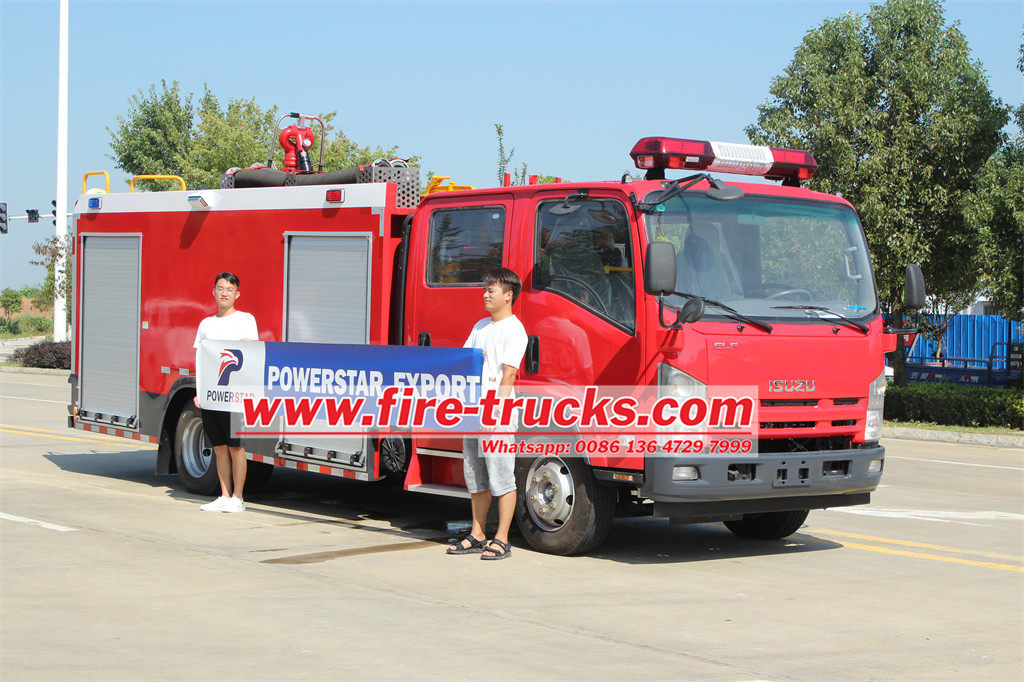
操作トレーニング:消防隊員の操作スキルと緊急対応能力を向上させるために、メーカーまたは消防署は専門の人員による操作トレーニングを行うことができます。トレーニングの内容には、車両の操作、メンテナンス、トラブルシューティングなどが含まれます。
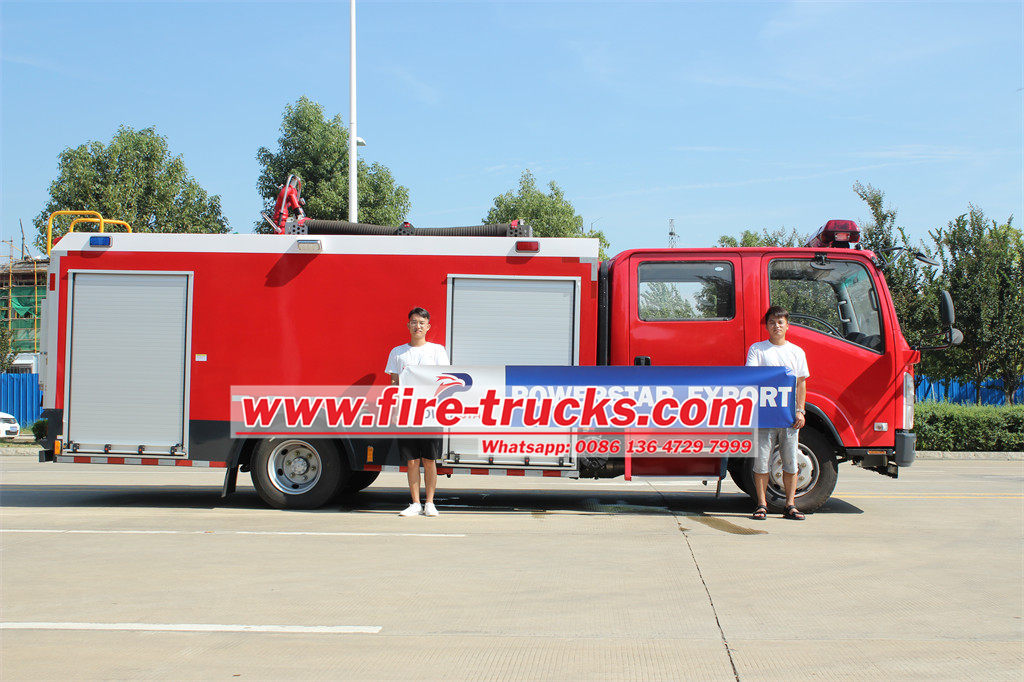
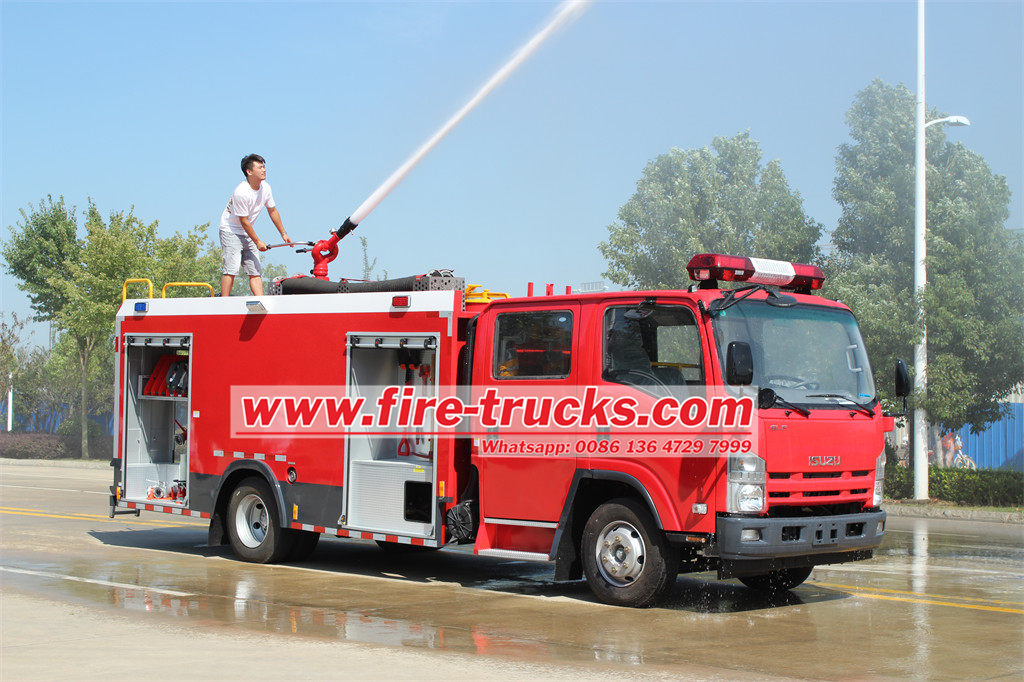
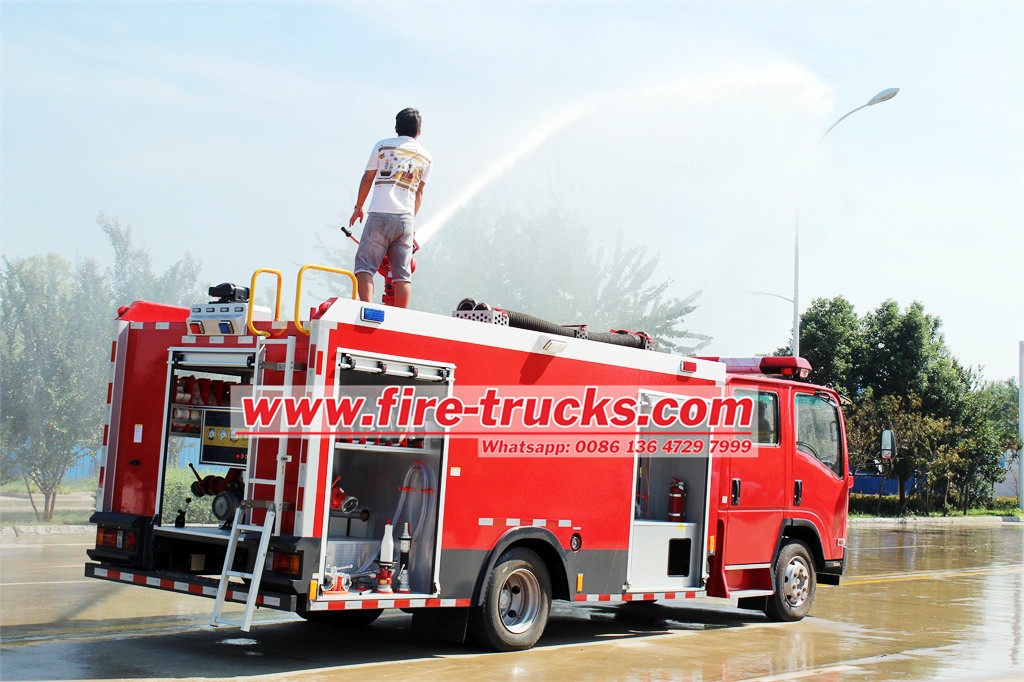
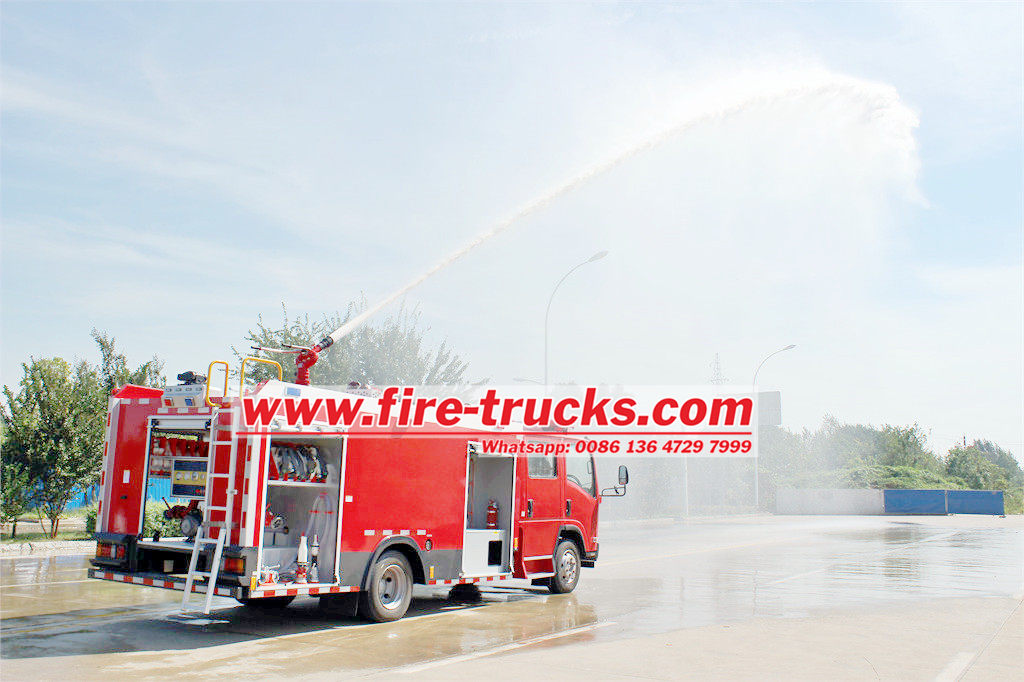
The process of fire brigade purchasing Emergency fire department truck Isuzu usually includes the following key steps:
1. Demand analysis and model selection
Demand analysis: The fire brigade first needs to clarify its own needs, including the purpose, performance requirements, load capacity, ease of operation, etc. of the Emergency fire department truck Isuzu, as well as the budget range.
Model selection: According to the results of the demand analysis, the fire brigade can contact the regular fire truck manufacturer with production qualifications to learn more about the performance, price, after-sales service and other information of different models, so as to choose the model that best suits its needs.
2. Contract signing and vehicle production
Contract signing: After selecting the model, the fire brigade needs to sign a legal and compliant Emergency fire department truck Isuzu purchase contract with the manufacturer to clarify the vehicle configuration, price, delivery time, after-sales service and other terms.
Vehicle production: The manufacturer starts to produce the Emergency fire department truck Isuzu according to the contract requirements. If the fire brigade needs to customize special configurations or functions, it should be clarified with the manufacturer when the contract is signed and supervised during the production process.
3. Vehicle acceptance and delivery
Vehicle acceptance: After the vehicle is produced, the fire brigade needs to conduct acceptance together with the manufacturer. The acceptance content includes whether the vehicle's appearance, performance, configuration, etc. meet the contract requirements, and whether the accompanying documents are complete (such as chassis certificate, vehicle certificate, one-time certificate, environmental protection list, purchase tax declaration form, vehicle invoice, etc.).
Delivery and use: After the acceptance is qualified, the fire brigade pays the balance, and the manufacturer delivers the Emergency fire department truck Isuzu to the fire brigade for use.
4. Vehicle licensing and insurance processing
Vehicle licensing: After the fire truck is purchased, it is necessary to go through the licensing procedures in accordance with the licensing standards of the local vehicle management office. This includes preparing relevant documents (such as motor vehicle sales unified invoice, vehicle certificate, etc.), filling out application forms, and conducting vehicle inspections.
Insurance processing: According to the relevant national policies, new cars must first apply for motor vehicle insurance before going through the household registration procedures. The fire brigade needs to purchase corresponding insurance for the fire truck to ensure that the vehicle can be compensated in time in the event of an accident.
5. After-sales service and training
After-sales service: The manufacturer should provide comprehensive after-sales service, including vehicle warranty, maintenance, and spare parts supply. If the fire brigade encounters problems during use, it should contact the manufacturer in time to solve them.
Operation training: In order to improve the operation skills and emergency handling capabilities of firefighters, the manufacturer or fire brigade can organize professional personnel for operation training. The training content includes vehicle operation, maintenance, troubleshooting, etc.